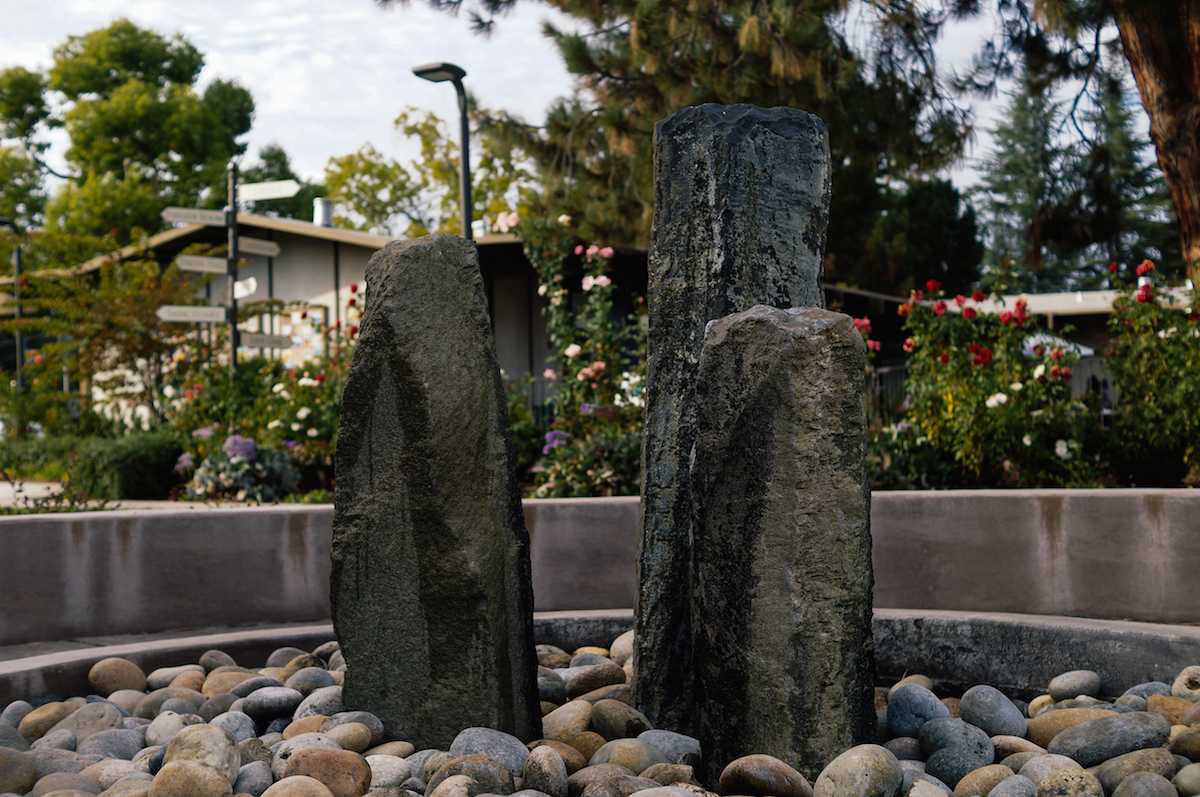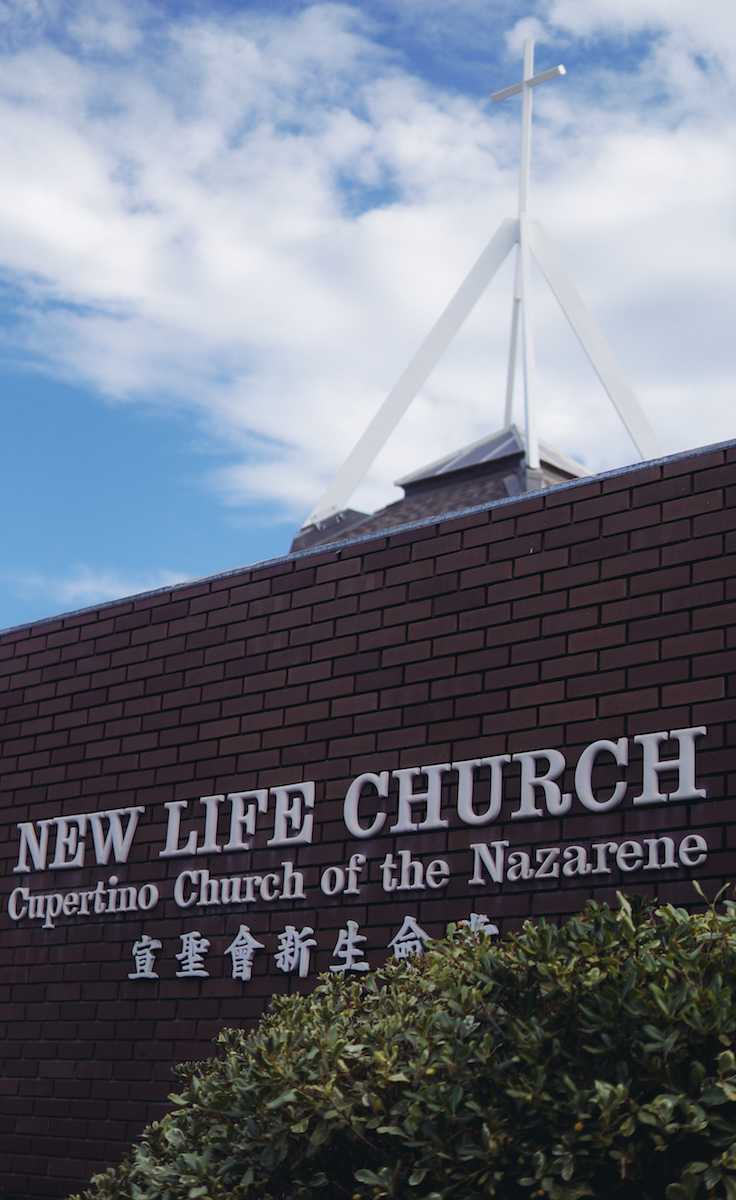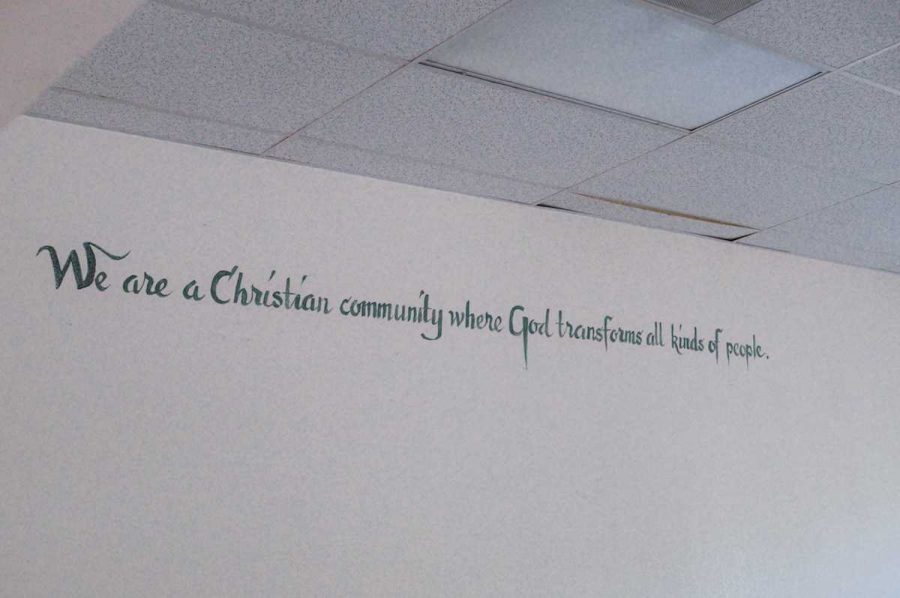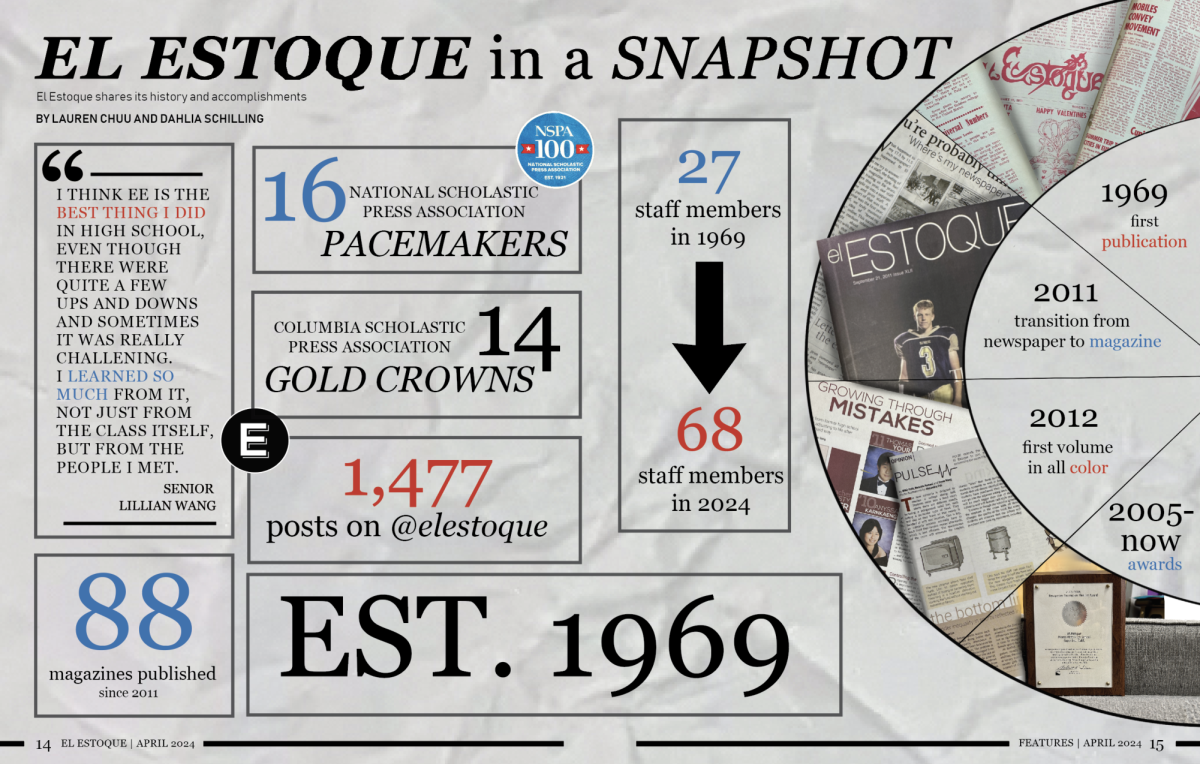The flip of pages in a prayer book. Voices singing joyously in unison. The sound of wine being poured into a glass. The fervent call to action from a religious leader. The sound,or lack thereof, of people simply meditating. Among the massive industrial sprawl that is the headquarters and office buildings of Apple, Inc., these sounds may not be typically associated with the bustling lives of Cupertino residents. However, on every Sunday morning, hundreds of families go to church and connect with their religious identity, and the usual noises of the hustle and bustle of being a tech hub are replaced with the sounds of a church congregation singing in chorus and people praying to find some deeper meaning in life. Two of these churches, New Life Church of the Nazarene and St. Jude’s Episcopal Church, lie adjacent to each other on McClellan Road.
On the corner of McClellan and Stelling there is a rustic apricot grove that slightly obscures the large complex of St. Jude’s Episcopal Church hidden behind it. Upon closer inspection of the grounds, it’s clear that this is a church, with a large wooden cross in front, a labyrinth in the back and large church buildings all around. In the back of the complex there is a small building called the Farmhouse that serves as the office for St. Jude’s. The Farmhouse was the first of several buildings in the complex that services were held at, and also serves as an office where the interview with the Rev. Bruce Bramlett was conducted.

“This congregation was established in the early 1960s, maybe even in the late 1950s.” Bramlett said. “It started when Cupertino was just a bunch of fields and prune [groves], vineyards, and stuff. You saw the apricot field out in the front? This whole area was just apricots. They bought a six-acre plot just for this congregation, and the congregation began to grow. It’s had several renovations since the sixties.”
As the church grew, the chapel had to move from the Farmhouse to another building, which was later renovated, and then an additional hall was built to accommodate more church activities.

St. Jude’s’ growth seems to have stabilized since its early days. “It’s a congregation of about 200 families, about 300 to 350 people,” Bramlett said. “It’s diverse, meaning about as diverse as Cupertino can get, so it’s mostly white, even though we have some Asian folk and some African-American folk, basically anyone who lives in Cupertino is represented here.”
But, this stability is concerning to church leadership in the long term, as St. Jude’s attendance slowly dwindles in a community whose demographics have changed dramatically since its early days. With fewer Episcopalians staying in Cupertino, the church faces a worrying lack of demand.
“What does it mean for us to be in a community where housing costs are just extraordinary, and where people can no longer afford to live here?”
A large part of this problem in the long term is the rising cost of living in Cupertino.
“What does it mean for us to be in a community where housing costs are just extraordinary, and where people can no longer afford to live here? The folks who are in this congregation, their kids can’t come here, they can’t live here. I mean, they just can’t afford a house!” Bramlett said, frustration clear in his voice. “What does that mean for the life of this community? Who’s going to come here? The kids of the people who come here can’t come here!” Bramlett said.

“The church tries to be a community resource as much as it can.”
A problem like this is entirely out of the church’s hands, but they are taking steps to avoid becoming irrelevant in the long run. In addition to reaching out within the community and trying to engage new members, the church is really trying to emphasize its role as a tool for the community.
“Already, this church is used by all kinds of groups that come here. There’s a senior group [the Live Oak community] that uses it during the day, there’s an afterschool program that meets here and a number of other groups,” Bramlett said. “The church tries to be a community resource as much as it can.”

Despite these worries about the future of St. Jude’s, there is an overwhelming sense of positivity and proactivity when talking to Bramlett.
“So all of those are big, big questions and I don’t think they’re different for any other predominantly Caucasian congregation in this city, but there’s no negativity about that. There’s no sense of an ‘us-and-them’,” Bramlett said.
Just next door to St. Jude’s there is another church. Though it looks older from the outside, New Life Church has just undergone a massive internal renovation, with a newly installed head pastor and president of the Church, Pastor Chris Hoch. Hoch has been brought in to breathe new life into the church, which has seen similar challenges to St. Jude’s in terms of a slowly fading congregation and a concerning inability to bring in new families to the church. Demographically speaking, New Life Church caters to a broader audience as it has three separate congregations: one that prays in Mandarin, one that prays in Cantonese and one that prays in English. These three congregations typically hold separate services, with some occasional mixed translated services and activities as a full church. However, the church is not free of problems.

“Currently, we’re looking at why we are here, and what our vision and purpose within the community is,” Hoch said.
New Life Church aims to provide a safe and welcoming religious space for the community of Cupertino, but has struggled to find an enthusiastic response in the community.
“[New Life] should be a place to explore, experience, question.”
“Unfortunately I think that when people in the United States think about the church they don’t think good things,” Hoch said. “[At New Life,] we’re not judgemental, we’re not condemning of other people. I think that this church specifically could change people’s minds.”
Hoch’s source of inspiration for the future of his new church seems to be helping others bring out their spirituality.
“The vision that I have for the church is that it serves as a place where the community would know that God loves them, and that this could be a place that anyone in the community can come in and pursue a relationship with a higher power,” said Hoch said. “[New Life] should be a place to explore, experience, question.”

The consensus between these neighboring churches seems to be that the role of religion in the new Cupertino is up in the air.
“We are trying desperately to find ways to engage the community in a positive way, and of having the community to see us in a positive way, as a resource, as a place to be,” Bramlett said. “It really is a changing dynamic in a changing community.”





















